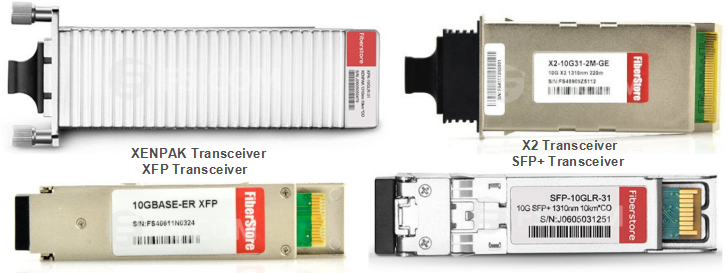November 14, 2016
Taking full advantages of low cost, high reliability, fast installation, easy maintenance and scalability, Ethernet Network becomes a very popular and commonly used LAN technology that has been developed for over 40 years and gets mature day by day. Under its continuous advancement and improvement, the data transmission rate has been increased greatly which causes the emergence of 10G, 40G, 100G and even 120G Ethernet Network. Among these kinds of Ethernet Network, there is no doubt that 10G Ethernet Network has become a commonplace for current network backbones, data centers, and server farms, supporting high-bandwidth, mission-critical applications. In this article, it will talk about why 10G Ethernet Network is so popular and which transceiver is most suitable for establishing 10G Ethernet Network.
It is well know that 10G Ethernet Network is developed for the purpose of ensuring faster data transmission and better network performance. As Ethernet technology is ever-accelerated and tended to be mature, 10G Ethernet Network has already become an desirable and much affordable choice with higher performance at lower cost.
10G Ethernet Network is designed with various advantages to cater for the ever-increasing applications which require considerable bandwidth to support large data transmission quickly. For instance, as an ideal technology to data transmission, it offers the best assurance for supporting forthcoming technologies and delivers utmost investment protection. Meanwhile, it is highly advantageous for Web caching, real-time application response, parallel processing and storage with its great bandwidth. Furthermore, compared to monthly communications link bills, the establishment of 10G Ethernet backbone is a one-time expense which will provide significant cost savings.
Nowadays, there exists indeed a need for 10G Ethernet Network. However, before deployment 10G Ethernet for your Network, you should consider lots of questions to design and make your network efficiently and smoothly, such as, selecting the right transceiver. The following will illustrate transceiver types for efficiently and smoothly establishing 10G Ethernet Network.
With the function of connecting the cabling to the network, the transceiver is an indispensable device for deploying 10G Ethernet network. At present, there are four kinds of transceiver used for 10G Ethernet network, XENPAK, X2, XFP and SFP+, as shown in the following figure.

XENPAK—the first 10G pluggable transceiver came to the market which supports the 802.3ae standard transmission optics. It was publicly announced on March 12, 2001 that is large, bulky, hot pluggable and used mainly in LAN switches. This kind of transceiver also supports the new 802.3ak copper standard with vendors now producing transceivers to connect CX4 cables.
X2—smaller than XENPAK pluggable transceivers. Its form factor is about 2/3 the size of the XENPAK as shown in the figure above. With the same "hot pluggable†specifications and supporting all the 10GbE standards (including copper), the X2 form factor allows for more port density on switches. In short, it provides customers with a strong sense of assurance, which makes this technology the best choice for today and will have strong vendor support.
XFP—the newest pluggable transceiver on the market which was published on March 27, 2002. Its form factor is slightly larger than the SFP pluggable transceiver used for gigabit technology but smaller than the XENPAK transceiver. The XFP form factor will allow switch vendors to increase port density in a smaller area for cost savings.
SFP+—first published on May 9, 2006 which is designed on the consideration to increase the capacity of the existing SFP. It is smaller than XFP transceiver, but has the same size as SFP transceiver. In contrast to earlier XENPAK or XFP modules, SFP+ modules leave more circuitry to be implemented on the host board instead of inside the module.
Since 10G Ethernet network has become more and more commonly used, hope the information about transceiver solutions in this article would guide you to choose the proper transceiver for establishing your 10G Ethernet network. Apart from transceivers solutions, you should also consider the cabling solutions like SFP+ cable for the 10G migration.
Posted by: katherinewangfs at
09:35 AM
| No Comments
| Add Comment
Post contains 677 words, total size 6 kb.
35 queries taking 0.0486 seconds, 65 records returned.
Powered by Minx 1.1.6c-pink.









